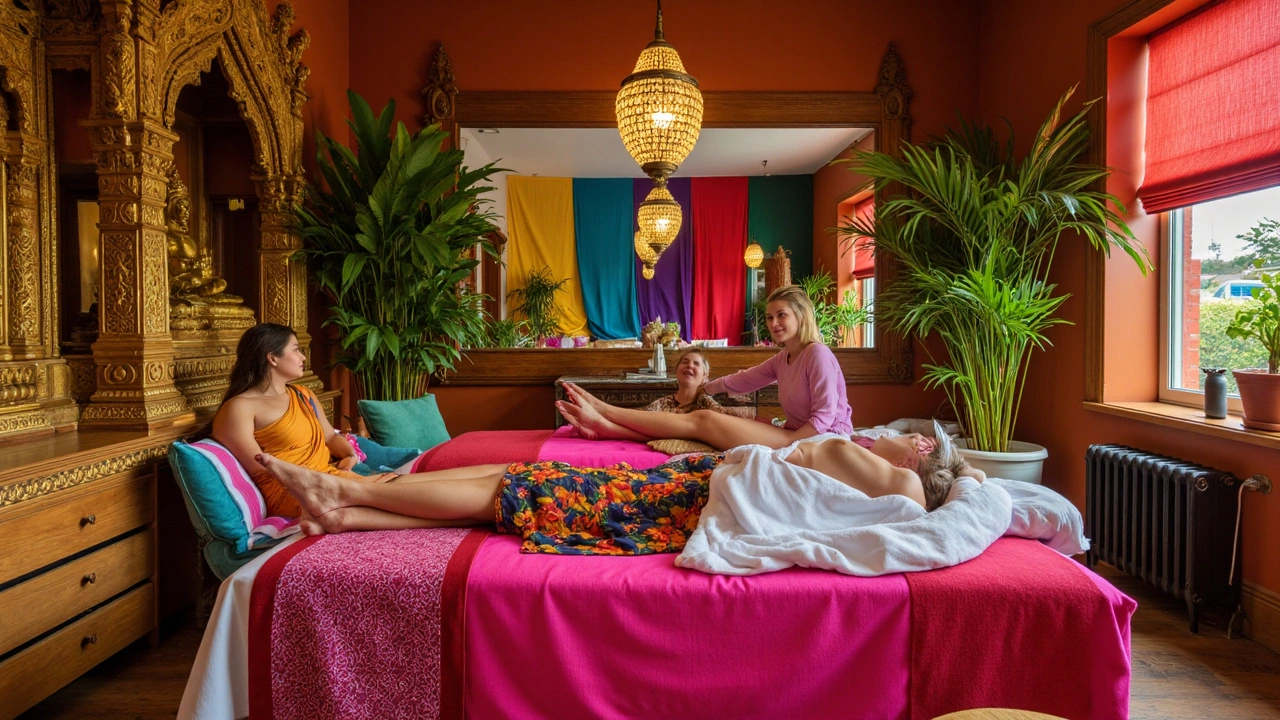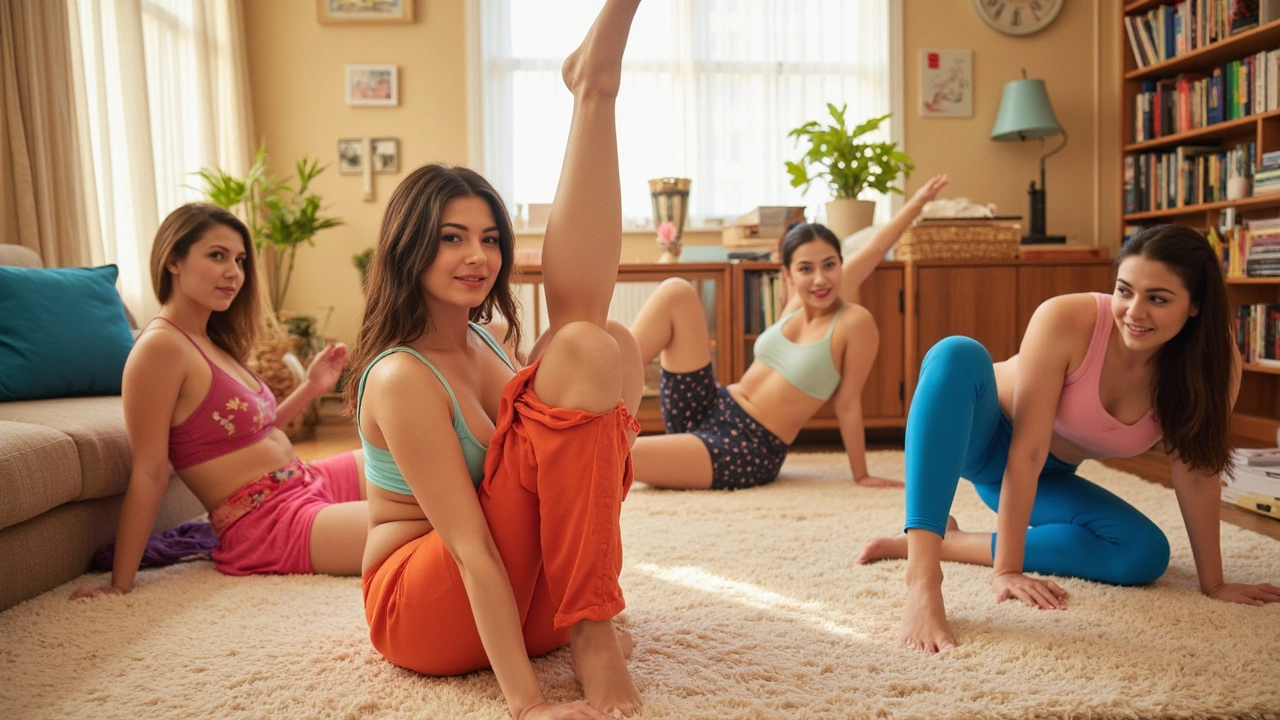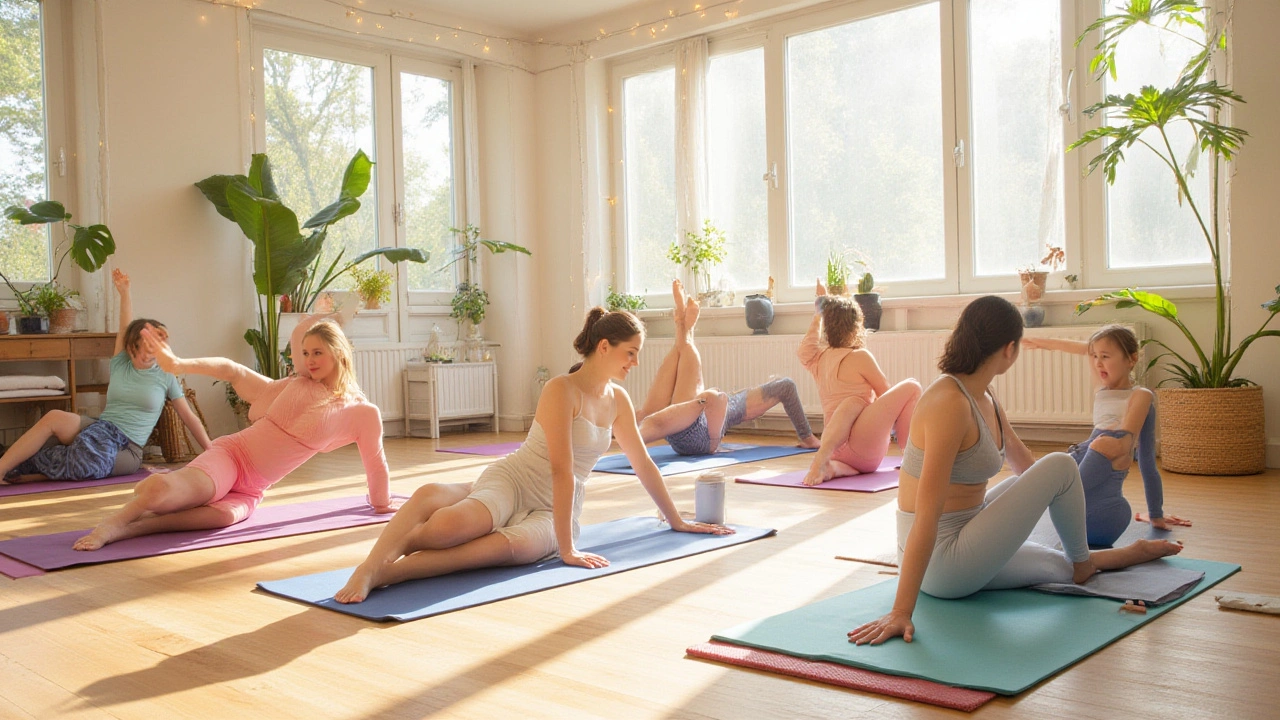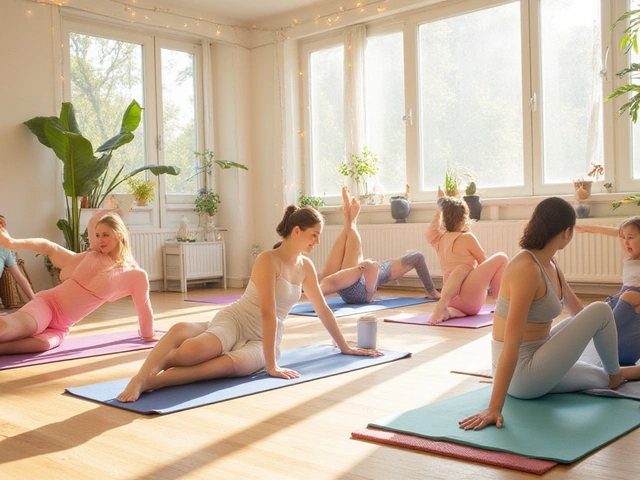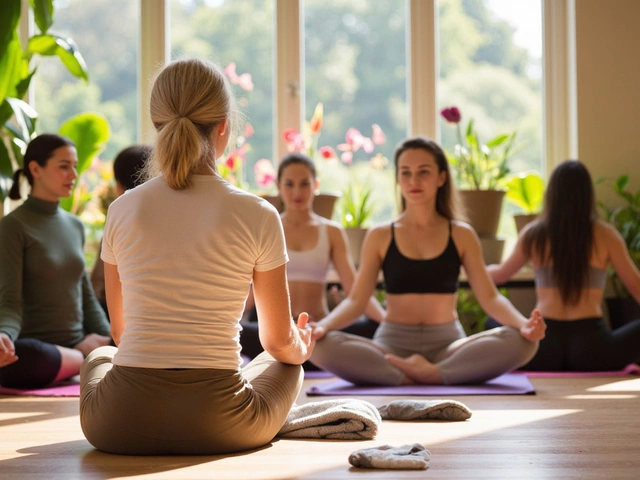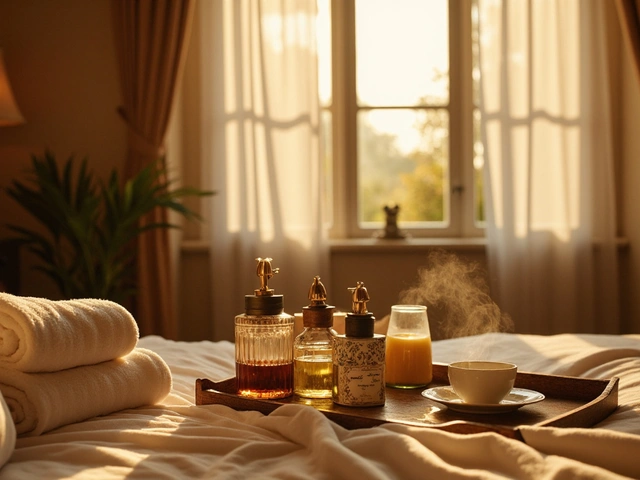Tracing the Roots: The Journey of Thai Massage from Sacred Ritual to Global Phenomenon
There's something almost mystical about Thai massage. Anyone who's tried it can tell you—this isn't your standard back rub. Imagine walking through the chaotic beauty of old Chiang Mai, the scent of lemongrass in the air, and you stumble into a temple where monks move with deliberate, gentle precision as they heal weary travellers. That’s the atmosphere Thai massage came from—part ritual, part science, all about balance and energy.
The history of Thai massage goes back over 2,500 years. We’re not talking about just any spa technique; this practice, called "Nuad Boran" in Thai, has roots deeply entwined with Buddhism and ancient Indian medicine. Legend credits Jivaka Kumar Bhaccha, a physician to the Buddha, as the founder of this healing art. Old Palm-leaf manuscripts, found in the ancient city of Ayutthaya and at Wat Pho in Bangkok, give us snippets of techniques and herbal lore, but much of its story has been passed down person-to-person, generation by generation.
Many folks don’t realise the unique blend that Thai massage is. Early practitioners looked at Ayurveda from India, traditional Chinese medicine, and local Thai folk knowledge. They created something that’s part acupressure, part yoga, part meditative practice. The ‘Sen’ energy lines (picture something a bit like meridian lines in Chinese medicine) became the highways practitioners worked on, pressing, stretching, and breathing life into weary bodies. The philosophy was simple: unblock energy, and you’ll find health.
Dive into the old temples of Bangkok or Chiang Mai, and you still see murals showing healers bending and stretching clients like human pretzels, often right on the floor. No fancy oils or tables here. The session is a kind of moving meditation—practitioner and recipient are locked in a gentle dance, breathing together, moving together. It’s less about mindless relaxation, more about waking you up inside, restoring balance, and getting your body back into its natural groove.
This tradition wasn’t just for the rich or elite. Everyone from rice farmers to travelling monks benefited. Word of mouth, and migrating monks, spread the practice throughout Southeast Asia. It kept evolving, soaking up influences from neighbouring cultures, always staying rooted in the idea of touch as a tool for healing.
War, politics, even modern city life threatened to push these ancient techniques into obscurity, especially when Western medicine became the go-to for health. But Thai massage hung in there. It flourished quietly in temples and village homes, and then, bang—the 1970s happened. Travelers and hippies, chasing the “magical East,” discovered it, raved about it, and suddenly people everywhere wanted to experience Thai healing. It was only then that the Thai government stepped in to standardise and promote Thai massage as a national heritage—recognising what locals already knew.
By now, the UNESCO seal of approval (yes, it’s officially on their Intangible Cultural Heritage list since 2019) helps preserve this heritage. But that’s just paperwork. The real magic is in how the practice still feels alive—evolving with each practitioner, every new city, and curious traveller who finds a mat and gives it a go.

Thai Massage Today: Mixing Traditional Wisdom with Modern Wellness
Fast-forward to 2025, and you’ll see Thai massage thriving in ways that would probably make those old temple monks smile. In cosmopolitan cities from Brighton to Berlin and Chicago to Chiang Mai, you’ll find studios offering everything from no-nonsense, ultra-traditional sessions to souped-up spa treatments with oils, warm stones, and your choice of calming playlist.
But how does the old actually blend with the new? For starters, training is a lot more formal these days. Sure, some practitioners still learn from family or temple elders, but most attend proper schools—Wat Pho in Bangkok is still the gold standard, but Brighton isn’t far behind with a handful of outstanding training centres. Here, students spend hundreds of hours learning anatomy, energy lines, body mechanics, and the protocols that keep clients safe and happy.
Modern Thai massage clinics take hygiene and comfort seriously—no more rough straw mats on the temple floor unless that’s the vibe you want! Most clinics use plush mats, soft music, privacy curtains, and offer herbal compresses or warm towels. They start with a consultation because, let’s face it, not everyone needs the same routine—some want deep stretches, others just crave a gentle touch to calm the nerves.
Today, you can choose from a dizzying variety of approaches. Want pure tradition? There’s the classic full-body sequence with pressure and stretches, performed fully clothed, on the floor, no oils. Feeling adventurous? Try Tok Sen, where practitioners use a wooden mallet to gently tap along your energy lines, sending subtle vibrations straight to your bones. Or maybe Thai oil massage fits you better—a mix of traditional moves and long, sweeping strokes, combined with aromatic herbal oils for added relaxation.
In Brighton, the scene is buzzing. From North Laine to the seaside, Thai wellness studios serve stressed commuters, athletes, students, and even elderly folks looking for pain relief. These places mix classic moves with sports massage, acupressure, or even aromatherapy, making each session unique. Many therapists know several styles—so you can get a bespoke treatment that’s just right for your body and mood.
Ever tried a ‘couples Thai massage’? That’s big now too. It’s popular with partners and friends wanting to unwind together. Studios set up side-by-side mats, so you can share the experience—think of it as a yoga class meets a spa day, with someone else doing the hard work.
Fitness fans love that Thai massage isn’t just about chilling out. Many marathoners, yoga enthusiasts, and even office workers swear by it for improving flexibility. A published study in the Journal of Bodywork and Movement Therapies (2017) found that regular Thai massage sessions helped boost joint mobility and lower back flexibility in adults compared to a control group. It’s not magic, just the effect of muscle compression and stretch working in harmony.
The business side? Booking is a breeze these days. A decade ago, you’d have to call and hope for a slot. Now, most studios in Brighton and beyond let you book online, sometimes even on Instagram or WhatsApp. Prices range from around £40 for a 30-minute quick-fix to £90+ for a 90-minute deep session. Packages and loyalty discounts are common—studios want to keep regulars coming back, so they offer add-ons like hot herbal balls or foot soaks.
One tip: Always, always check that your therapist is certified and that the studio is clean and well-reviewed. A licensed practitioner not only knows how to give a top-notch session—they’ll also spot any contraindications so you don’t end up sore or injured.
For your first time? Don’t be surprised if you feel a mix of relaxation and a little soreness after (think “I just did a big stretch class”). Drink loads of water and maybe book your session for a day when you don’t have much on. You’ll want to savour that post-massage floaty feeling.
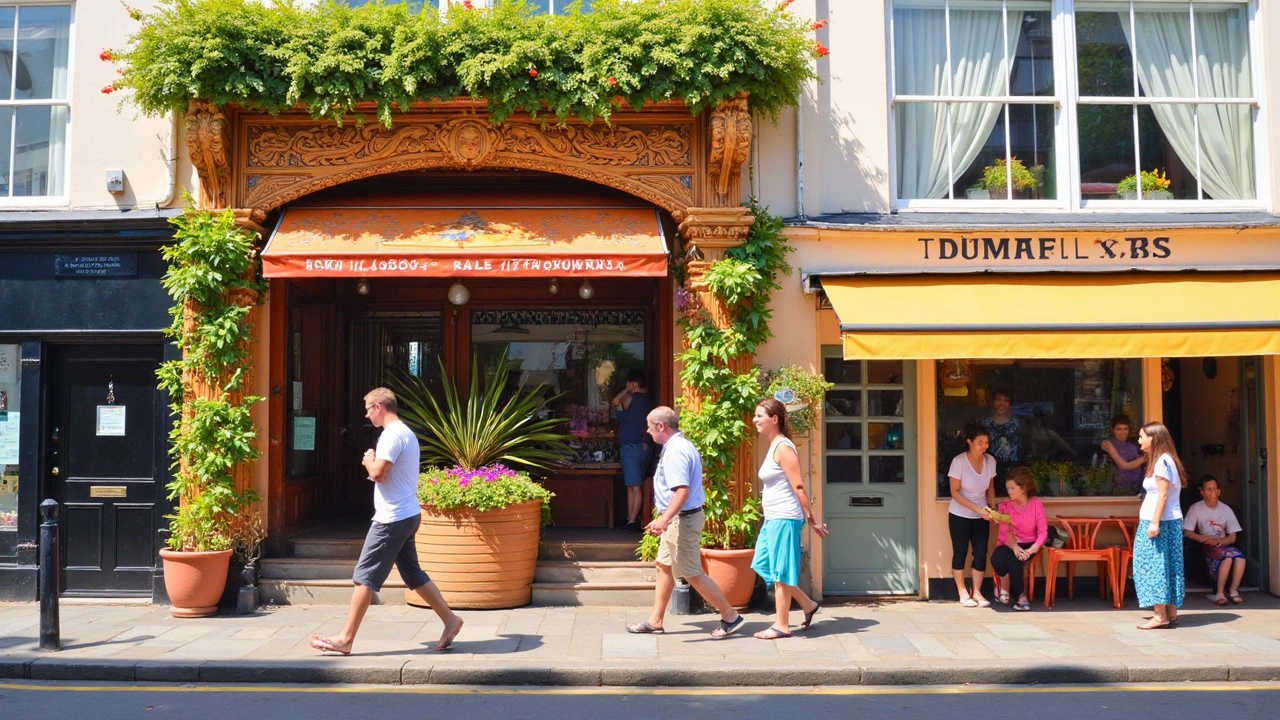
Why People Choose Thai Massage: Benefits, Tips, and What to Expect in a Session
Let’s face it—life’s hectic, and your body takes the brunt of it. That’s where Thai massage comes in as a bit of a reset button. It’s not just about stress melting away (though that happens plenty), but about helping your body work its best again. Here are some reasons people return to the mat, week after week.
Flexibility and pain relief top most lists. Tight shoulders after a long week at the office? Achy knees from running? Thai massage tackles all that with rhythmic pressure, stretching, and joint mobilisation. Unlike Swedish or deep tissue massage, you’re part of the process—your therapist might lift your legs, twist your torso, or even walk on your back (yes, really!). That active participation gets your blood flowing, wakes up sleepy muscles, and seeds long-term body change.
The “energy boost” isn’t just hippy talk. Many locals report feeling refreshed and alert after a session. This is probably due to the deep, mindful breathing that goes hand in hand with the treatment. It resets your nervous system—your “rest and digest” switch—so your body finally has a chance to do what it’s meant to do: recover, digest, chill out.
Sleep is another biggie. Thai massage’s impact on the parasympathetic nervous system makes it easier to fall, and stay, asleep. People struggling with insomnia often notice better rest after even a single session. No sleeping pills needed, just an hour on the mat and some old-school healing touch.
Beyond the physical stuff, there’s a mental health bonus too. People rave about the meditative quality of a session. It’s not just lying there—there’s a rhythm to the practitioner’s movement, the gentle rocking and leaning, the focus on steady breathing, that helps quiet frantic thoughts. For anyone with anxiety, that combination offers a welcome mental reset.
First-timers sometimes worry about things like pain, embarrassment, or not knowing what to wear. Here’s the scoop: Thai massage is generally done fully clothed (light, stretchy clothes work best—think yoga or gym kit). Any discomfort shouldn’t be more than a firm “good stretch” feeling. Just tell your therapist if something is too much—they’re trained to adjust.
When you arrive, you’ll usually be greeted and asked to fill out a quick health form. Good clinics will ask about recent injuries, surgeries, or problem areas. You’ll head to a private space, change if needed, and relax on a mat. Sessions start at the feet and work up to the head, with a mix of palms, thumbs, elbows, and sometimes feet applying rhythmic pressure. Expect to be asked to change position—side, face up, face down, even sitting up—as your therapist works through the sequence.
If you’re after something specific—relief from migraines, say, or prepping for a race—let your therapist know at the start, so they can tweak their approach. Thai massage is brilliantly adaptable, making it ideal for both “just need to unplug” days and more targeted bodywork.
Here’s a quick list of tips to make the most of your session:
- Arrive well-hydrated and avoid big meals beforehand.
- Wear comfy, stretchy clothes (some studios provide them, but check ahead).
- Communicate openly with your therapist about pressure or any discomfort.
- Plan some quiet time after—don’t book a marathon session and then rush to a work meeting.
- Ask if the studio offers loyalty cards or package deals if you plan on coming back.
For the cautious—Thai massage is generally safe for most people, but if you have big medical issues (like serious heart problems, high risk pregnancy, or major joint replacements), check with your GP first. And always double-check those credentials!
To sum up, Thai massage has travelled a wild, wonderful road from ancient temple floors to the heart of modern city life—Brighton included. Whether you’re a nervous newbie or a wellness devotee, there’s something uniquely grounding and energising about this practice. Next time your body aches or your mind races, you know where to find a bit of ancient wisdom, right by the seaside.
